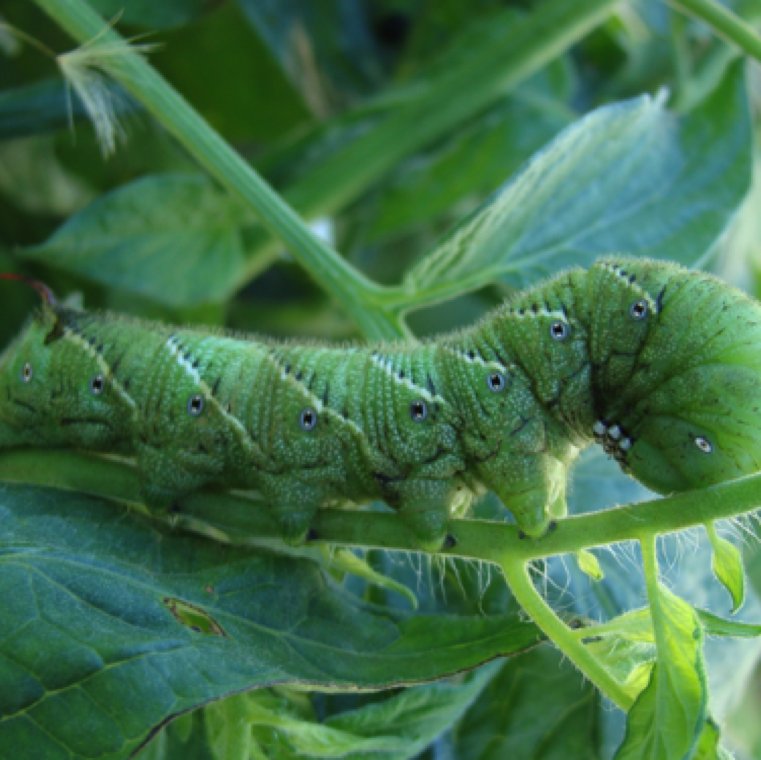
Hornworms are the larvae of moths, specifically the five-spotted hawk moth or tomato hornworm. They can be a real menace to your vegetable garden. Honestly, if you’ve ever found your plants stripped bare overnight, you may have encountered a hornworm. In this article, we’ll explore the factors that lead to their explosive population growth, how to identify them, and what you can do if your garden suddenly falls under siege.
Understanding Hornworm Life Cycles
To grasp why hornworm populations spike, we first need to understand their life cycle. Hornworms start as eggs laid by moths on the undersides of leaves, often on plants like tomatoes, peppers, and eggplants. Once these eggs hatch, the tiny caterpillars emerge hungry and ready to feast. They grow quickly, shedding their skin multiple times as they gain weight, which can lead to rapid increases in their numbers.
Typically, hornworms go through several stages in their life cycle over a few weeks. This fast development is critical. When conditions are right—like ample food supply, warm temperatures, and low predator presence—they can reproduce and thrive at an astonishing rate. You might say it’s like a buffet where they never run out of food!
Ideal Conditions for Hornworms
You might be wondering what exactly those “ideal conditions” are. A few factors can create a perfect storm for hornworms:
- Warm Weather: Hornworms love warmth. They thrive in temperatures between 70°F and 85°F (21°C to 29°C). When summer rolls in, you’ll likely see more activity.
- Abundant Food Supply: If your garden is filled with lush tomato or pepper plants, it’s like an all-you-can-eat buffet for these caterpillars, allowing their numbers to grow quickly.
- Low Predation: Fewer natural predators mean more hornworms can survive to adulthood. Birds and beneficial insects help keep their numbers in check, but when these predators are absent, hornworm populations can explode.
Why Do They Show Up in Large Numbers?
You might be thinking, “So, they love warm weather and food—why would they suddenly show up in droves?” Well, hornworm population spikes often happen due to specific environmental changes.
For example, if a region experiences an unusually warm and wet spring, you might find that hornworms breed more quickly than usual. Wet conditions can lead to healthy plant growth, providing plenty of food for growing caterpillars. As plants thrive, the hornworms have a smorgasbord right at their fingertips, allowing them to reproduce exponentially.
The Role of Migration
Another factor that contributes to hornworm population surges is migration. Adult moths can travel considerable distances to find food sources. If lots of moths migrate into an area with a good supply of host plants, that can kick off a population boom. It’s like them finding a new neighborhood filled with delicious restaurants!
Keep an eye on local gardening reports or gardens in your area. If you start seeing an influx of moths, it could signal a potential hornworm invasion.
Identifying Hornworms in Your Garden
Knowing how to identify hornworms is crucial if you want to protect your garden. These caterpillars can be a bit tricky since they blend in beautifully with the leaves. They’re typically bright green and can grow up to 4 inches long. Look for:
If you catch them early, you can reduce their populations before they cause significant damage. Think of it like catching a cold before it spreads!
Natural Predators and Pest Control
One of the best ways to manage hornworm populations is to encourage natural predators. Birds, parasitic wasps, and beneficial insects can help keep these pests in check.
You can also use methods like:
- Hand-Picking: If you see hornworms, pick them off your plants and squish them. A little gross, I know, but effective!
- Neem Oil: This natural pest control method can deter hornworms without harming beneficial insects. Just make sure to follow the instructions on the label!
- Organic Insecticides: If things get out of hand, consider organic insecticides made from bacteria like Bacillus thuringiensis (Bt) that specifically target caterpillars.
Long-Term Hornworm Management Strategies
If you’ve had hornworm problems before, you might want to consider long-term strategies to manage their populations.
First, practice crop rotation. Changing what you grow in specific areas can disrupt the hornworm’s life cycle. For instance, if you planted tomatoes last year, consider using different plants next year. This can confuse the adult moths and make it less likely they’ll find a suitable place to lay their eggs.
Also, consider companion planting. Some plants can deter hornworms, such as basil or marigolds. By planting these alongside your veggies, you can create a friendlier environment for your garden while keeping pests at bay.
When to Seek Professional Help
If you find that your efforts aren’t keeping up with a massive hornworm infestation, it might be time to call in the pros. Local agricultural extensions or pest control services can provide tailored advice based on your garden’s specific situation. They often have resources to combat not just hornworms, but other pests that could be lurking in the shadows!
The Importance of Monitoring Your Garden
One of the key takeaways here is that regular monitoring is essential. If you want to keep hornworms at bay, inspect your plants frequently. Looking under leaves and checking for signs of damage can help you catch those pesky caterpillars early.
Sometimes, it’s just about being proactive. Think of your garden as a member of your family—it deserves a little attention and care to thrive!
You might even want to keep a garden journal. Documenting what you see can help you spot patterns or issues over time, making it easier to manage those sporadic hornworm spikes. And who doesn’t love a good journal entry?
In summary, hornworm population spikes can be attributed to various factors like ideal weather conditions, abundant food sources, and low predation. Understanding their life cycle and behavior provides valuable insights into how to manage these pesky caterpillars effectively.
By keeping an eye out for their distinctive characteristics and encouraging natural predators, you can better protect your garden from these hungry invaders. Remember, a little knowledge goes a long way—monitoring your plants doesn’t just help prevent hornworm outbreaks; it also fosters a healthier, more vibrant garden overall. Happy gardening!

